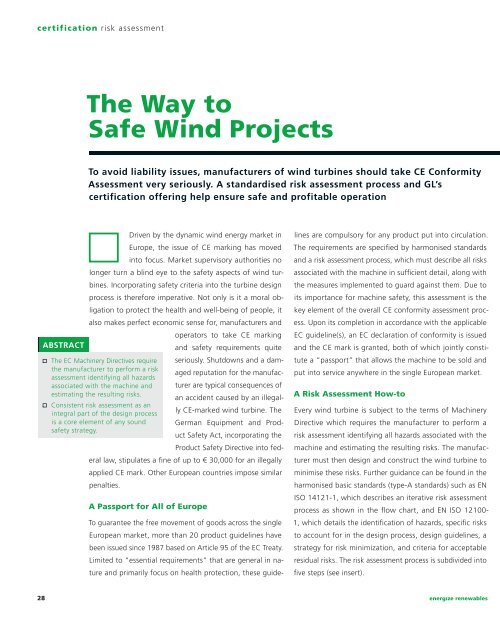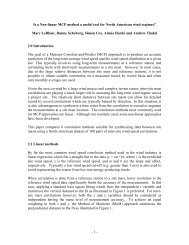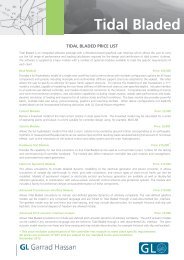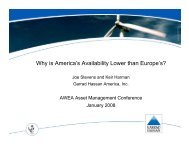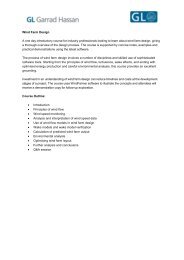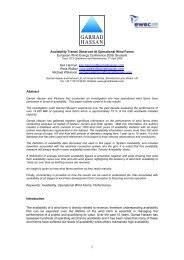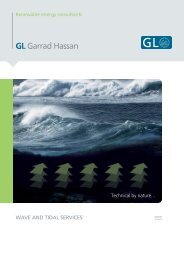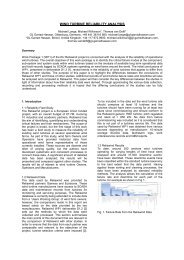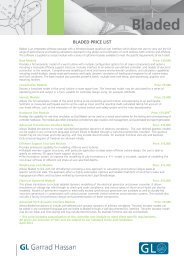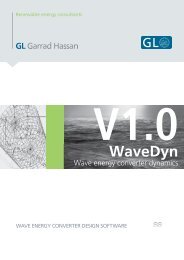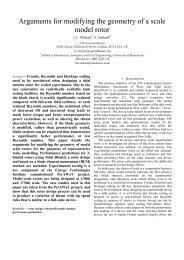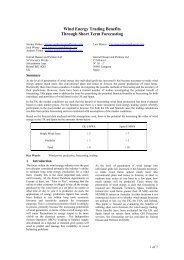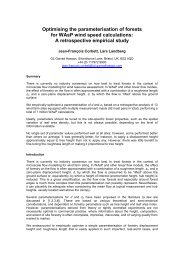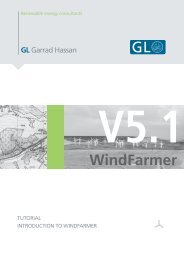energize renewables 01/2010 - GL Group
energize renewables 01/2010 - GL Group
energize renewables 01/2010 - GL Group
- No tags were found...
Create successful ePaper yourself
Turn your PDF publications into a flip-book with our unique Google optimized e-Paper software.
certification risk assessmentThe Way toSafe Wind ProjectsTo avoid liability issues, manufacturers of wind turbines should take CE ConformityAssessment very seriously. A standardised risk assessment process and <strong>GL</strong>’scertification offering help ensure safe and profitable operationAbsTrACTDriven by the dynamic wind energy market inEurope, the issue of CE marking has movedinto focus. Market supervisory authorities nolonger turn a blind eye to the safety aspects of wind turbines.Incorporating safety criteria into the turbine designprocess is therefore imperative. Not only is it a moral obligationto protect the health and well-being of people, italso makes perfect economic sense for, manufacturers andThe EC Machinery Directives requirethe manufacturer to perform a riskassessment identifying all hazardsassociated with the machine andestimating the resulting risks.Consistent risk assessment as anintegral part of the design processis a core element of any soundsafety strategy.operators to take CE markingand safety requirements quiteseriously. Shutdowns and a damagedreputation for the manufacturerare typical consequences ofan accident caused by an illegallyCE-marked wind turbine. TheGerman Equipment and ProductSafety Act, incorporating theProduct Safety Directive into federallaw, stipulates a fine of up to € 30,000 for an illegallyapplied CE mark. Other European countries impose similarpenalties.A Passport for All of EuropeTo guarantee the free movement of goods across the singleEuropean market, more than 20 product guidelines havebeen issued since 1987 based on Article 95 of the EC Treaty.Limited to “essential requirements” that are general in natureand primarily focus on health protection, these guide-lines are compulsory for any product put into circulation.The requirements are specified by harmonised stan dardsand a risk assessment process, which must describe all risksassociated with the machine in sufficient detail, along withthe measures implemented to guard against them. Due toits importance for machine safety, this assessment is thekey element of the overall CE conformity assessment process.Upon its completion in accordance with the applicableEC guideline(s), an EC declaration of conformity is issuedand the CE mark is granted, both of which jointly constitutea “passport” that allows the machine to be sold andput into service anywhere in the single European market.A Risk Assessment How-toEvery wind turbine is subject to the terms of MachineryDirective which requires the manufacturer to perform arisk assessment identifying all hazards associated with themachine and estimating the resulting risks. The manufacturermust then design and construct the wind turbine tominimise these risks. Further guidance can be found in theharmonised basic standards (type-A standards) such as ENISO 14121-1, which describes an iterative risk assessmentprocess as shown in the flow chart, and EN ISO 12100-1, which details the identification of hazards, specific risksto account for in the design process, design guidelines, astrategy for risk minimization, and criteria for acceptableresidual risks. The risk assessment process is subdivided intofive steps (see insert).28 energıze <strong>renewables</strong>


